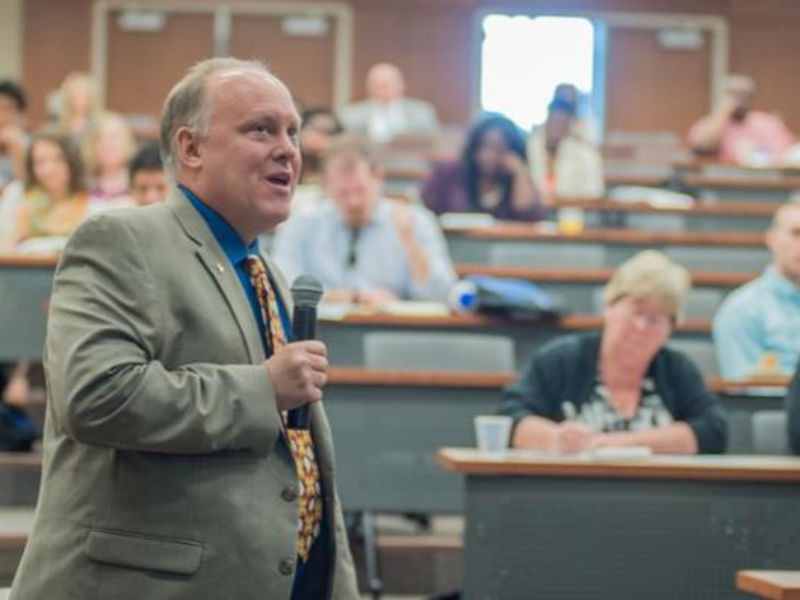OAKWOOD - The University of North Georgia (UNG) Friday hosted student counselors, admissions officers, financial advisors and others from University System of Georgia (USG) institutions in a one-day conference about increasing financial literacy among high school and college students.
The conference, “Investing in a Culture of Financial Literacy,” was held on the Gainesville campus in Oakwood and hosted by UNG’s Student Money Management Center, one of the first collegiate centers in the nation dedicated solely to financial literacy instruction for students.
“Teaching students how to manage their money is critical to helping them persist in college and complete their degrees,” said UNG President Bonita C. Jacobs. “We are honored and excited to share with other institutions what UNG is doing to ensure our students develop the knowledge and skills necessary to be fiscally responsible.”
Financial stress is cited as the highest factor driving post-secondary dropout rates at nearly 60 percent, and UNG’s seeks to create a discussion on how best to combat the issues that come along with the rising costs of higher education. UNG has been cited by national publications for its affordability, educational quality, and the low amount of debt incurred by its graduates. The average debt at graduation for UNG students is less than $12,000.
Paul F. Goebel, senior director for the Student Money Management Center at the University of North Texas and the event’s keynote speaker, outlined plans to help educators gather more pertinent data to better drive their financial literacy programs, and provided insight into how to develop a training curriculum for peer counseling and coaching sessions.
“These are invaluable skills that many students are not learning from their families during a critical time, when ever-increasing costs are putting a strain on entire households,” Goebel said.
More than 40 million Americans have contributed to a current national student loan debt total greater than $1.2 trillion. According to The White House, 40 million Americans have student loans and more than 70 percent of U.S. students who graduate with a bachelor's degree leave an average debt of nearly $29,000.
Bob Swoszowski, a trustee of the UNG Foundation and owner of Northeast Georgia Inc., and other speakers held breakout sessions at the event to address financial literacy and programs from various perspectives.
“Twenty percent of college graduates that reach age 60 still owe money on their student loans,” said Swoszowski, whose company operates 11 McDonald’s restaurants in northeast Georgia “This, along with the fact that 31 percent of college graduate move back home with their parents because of debt, is something that needs to be remedied.”
Dr. Donna Danns, associate professor of economics at UNG, highlighted organizational models and key characteristics of financial education programs being developed by colleges and universities to further the personal financial education of their students.
Representatives from Sallie Mae presented “How America Pays for College,” a comprehensive look at how American families invest in undergraduate education and shifting attitudes in attendance and payment. The study also identified four different “personas” on a scale measuring paying-for-college preparedness. Student groups from the Nu Gamma Chapter of Beta Alpha Psi and ENACTUS spoke about how UNG is including financial literacy initiatives in community service and the Peer Financial Counseling Program.
“We need to have these conversations because we are seeing the same kinds of problems everywhere,” said Erick Jones, director of UNG’s Student Money Management Center. “More students are taking out private loans, interest rates are rising, and many students are taking potentially harmful risks to stay in school or dropping out. This is about creating a movement to reverse this growing trend.”









